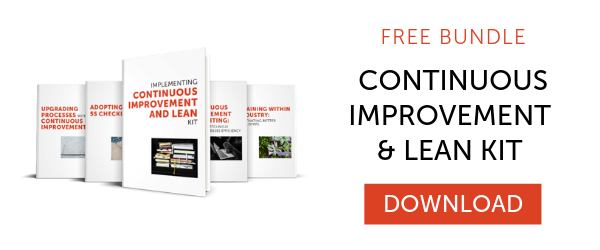
Continuous Improvement
4 min read
A Lesson in Lean Manufacturing From the North Pole

If Santa Claus ran a toy company, he’d have the best lean manufacturing operations in the industry. A lean analysis shows that he delivers custom tailored products to every one of his clients; providing immense value. He is also able to accomplish this with minimal waste and able to adapt to shifting demands of the market, every, single year.
Whether or not you believe in the magic of St. Nick, there is a lesson to be learned that all lean manufacturing operations can benefit from. If you hired Santa as a consultant, what would he have to say of your business? Is it lean?
St. Nick’s Business Plan
If you think about it, the mission of the “North Pole Co.” is to create joy and cheer throughout the holiday season. They do this by delivering presents (value) to everyone on the nice list (loyal customers).
Our form of currency, as “customers,” is each act of kindness that makes us good people. In effect, we pay Santa in good deeds in exchange for the annual chimney-delivered gifts that spread holiday cheer.
Mr. Claus’s operations are located in the North Pole — a headquarters placed in one of the world’s most remote locations, presumably, to protect trade secrets. Waste, in this case, is made irrelevant by a magically never-ending supply of resources. And to top it off, he has a limitless volunteer workforce, which makes cutting costs a non-issue.
Getting Lean vs. Cost Cutting
But any student of lean manufacturing knows that lean isn’t about cutting costs, it’s about finding ways to provide more value with less waste.
So, since Kris Kringle’s resources are essentially infinite, the North Pole Co. is left with only one avenue for lean improvement — provide more value.
St. Nick has a unique problem, and it’s hard to relate to the concept of free resources. But in the spirit of the holidays, we should consider evaluating our business operations like the North Pole.
What if our resources were limitless?
Limitless Value
Asking this question forces us to consider improving the value we provide as the only option available to become more lean. All too often, "lean" manufacturing companies cut costs and trim small amounts of waste as if those were the only avenue for improvement.
Of course, cutting costs feels nice. But that feeling of relief or presumed business savvy is short-lived. As the lean expert, Dr. Womack, discusses in our latest interview:

Womack:
“The problem with the connotations of the term ‘lean’ is that when people hear it, what that sounds like is cost reduction — and that’s never actually what we meant. It seemed to us that a large part of the manufacturing world’s problem was the difficulty in figuring out what the customer really valued as opposed to the bundle of stuff that you are giving them.”
As lean manufacturing businesses, we make a lot of assumptions about what our customers want. We create an excellent product or services and think, “This is so impressive, how could anybody not want it?”
Despite this, great products and services go out of business every day. We assume there’s a list of people that value what we’re offering and once we find that list, many make the mistake of thinking that relationship will never change.
Create Value, Then Check it Twice
Mr. Claus is a CEO that recognizes people’s values can change frequently. He doesn’t assume that because you were nice last year, you’re willing to be nice for his gifts again this year.
Every year he goes through the intimidating process of reevaluating who his customers are and what they value. Every year Kris Kringle makes a list of new and returning customers and thinks critically about how he can serve them to the best of his ability.
And because he’s a relentlessly thorough CEO, he checks it twice.
Topic(s):
Continuous Improvement
Related Posts
View All Posts
Continuous Improvement
Lean Thinking vs. Cost Cutting with James Womack
5 min read
When properly applied, lean manufacturing principles cut costs by reducing waste and focusing on value. But many companies make the vital mistake of confusing cost cutting...
Continue Reading
Continuous Improvement
Lean Manufacturing Lessons From Wikipedia
5 min read
When Jimmy Wales, founder of Wikipedia, was interviewed on NPR’s “How I Built This,” he revealed a valuable insight — sharing and improving knowledge is hard work. The...
Continue Reading
Continuous Improvement
Book Club: “The Joy of Lean”
6 min read
The Dozuki book club is your go-to place for industry books and resources. Our team curates knowledge from industry experts, letting you identify key takeaways and start...
Continue Reading



